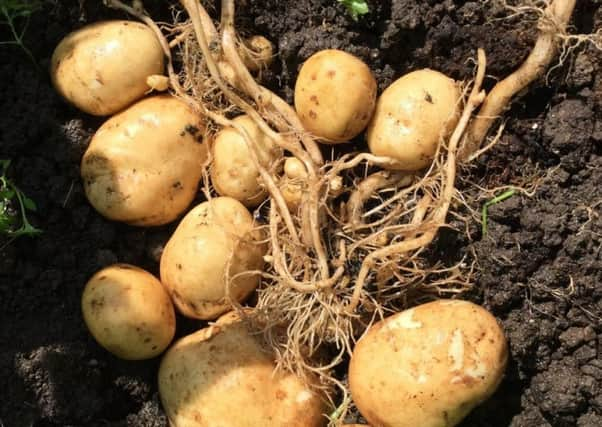Potatoes can help improve soil condition


The vegetable patch will have potatoes, and if there’s a greenhouse or polytunnel it will hold tomatoes.
Neither of these is difficult to grow for the kitchen, but raising them to perfection for exhibition is a different matter.
Advertisement
Hide AdAdvertisement
Hide AdWhenever a neglected garden or piece of land attached to a newly built house is being turned into growing space, the best starter crop is potatoes because they demand such tillage.
Digging the plot to a reasonable depth and incorporating organic matter is advisable because this encourages the beginnings of soil structure. The earthing-up process that follows, raking up soil either side of a row to form a mound that protects tubers from sunlight, disturbs weed growth.
As the potatoes swell they break soil up and create air spaces. By the time your crop is forked to the surface a former piece of wasteland is ready to grow a greater variety of plants.
Although potatoes grow best in a humus-rich soil, a reasonable crop can be harvested on land that has stood without plants for several seasons.
Advertisement
Hide AdAdvertisement
Hide AdBlight is the main threat to healthy growth and we are approaching the time of year that it appears in the North. Look for the wilting of foliage that announces its presence. This is followed by a blackening of leaves and eventual collapse of the plant. At the first sign, cut the haulm to ground and dispose of it.
Tomatoes are fascinating to grow. Short of talking to us, they are the best communicators in the plant world. When short of water they droop their leaves, and intense sunlight and heat causes an inward curling of leaves (clenched fist), indicating that cool shade is required.
If you overfeed or under-water, the combination can cause blossom end rot.